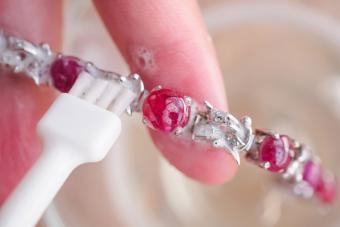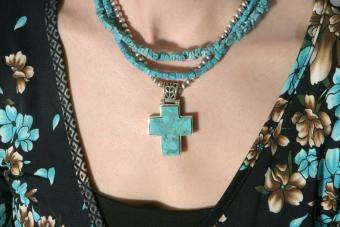
A reliable jewelry cleaner will help keep your collection of rings, necklaces and bracelets looking its best! With regular use, jewelry can become dull and dirty from exposure to items like hair spray, hand lotion, hair gel, and soap residue. A jewelry cleaner can be just the thing to put the sparkle back into your cherished jewelry.
Cleaning Precautions
Before using a jewelry cleaner, make sure you are familiar with any special cleaning instructions for your jewelry. For example, delicate pearls can be destroyed by harsh cleaning chemicals, marcasite can become loose and fall out of its setting if immersed in liquid, and emeralds are easily damaged by ultrasonic cleaners. Many irreplaceable keepsakes and family heirlooms have been ruined because the owner was not aware of special cleaning requirements. If you are unsure whether a particular cleaning method is safe for your jewelry, please contact a professional jeweler.
Soap and Water
Warm water and a mild detergent are a safe bet for most types of jewelry. Wiping pearls with a cloth dipped in warm, soapy water is the safest way to care for these delicate gems. However, soap and water is not always effective for ridding jewelry of dirt in small spaces, and so jewelry cleaners are needed.
Liquid Cleaners
Liquid cleaners are commonly used to clean gold jewelry, platinum, and precious and semi-precious gems. For delicate jewelry like opal and coral, only use liquid cleaners that specifically state that they are safe for this type of jewelry. Do not use this type of jewelry cleaner with pearls.
These cleaners typically include a tray to place the jewelry in and dip it into cleaning solution and a brush for loosening stubborn dirt from the metal and stone. This type of cleaner is available at most jewelry stores, as well as department stores that sell jewelry.
Gel Jewelry Cleaners
Gel jewelry cleaners are also frequently used with gold, platinum, and gemstones and come with a brush for cleaning away grime.
Steam Cleaners
Steam cleaners are often used by professional jewelers; however, steam cleaning units are also available for the home. A steam cleaner uses a jet of pressurized steam to rid a piece of the dirt that mars its beauty. This method is primarily for gold jewelry, platinum, sterling silver and diamonds, but can be harmful to other types of gems.
Ultrasonic Cleaners

While ultrasonic cleaners are most commonly used by professional jewelers, more and more people are purchasing them to clean their jewelry at home. These cleaners use ultrasonic waves to clean. To use an ultrasonic cleaner, first fill the cleaner's tank with cleaning solution or water, then place jewelry in the unit's tray and put into the tank. Flip the switch that turns on the motor. The motor creates energy sound waves that move through the solution in the tank, producing millions of tiny bubbles. The action of the bubbles moving around the jewelry knocks dirt off, and the tiny size of the bubbles allows them to get into all the hard to reach places in the piece of jewelry.
Hard gems like diamonds should be fine in an ultrasonic cleaner, but do not use it to clean softer gems like emeralds or opals. Again, make certain this type of cleaner is recommended for your jewelry before using it. Ultrasonic cleaners are easily found online.
Silver Cleaners
Finally, while sterling silver is a popular metal for jewelry, its main drawback is that it tarnishes easily. You can help keep your silver jewelry free of tarnish by wearing it regularly. For pieces that are already tarnished, silver cleaning solutions work well; however, it is vital to make certain that any gems in the jewelry can withstand the chemicals in the cleaner. Silver cleaners are available at most stores where cleaning supplies are sold.







